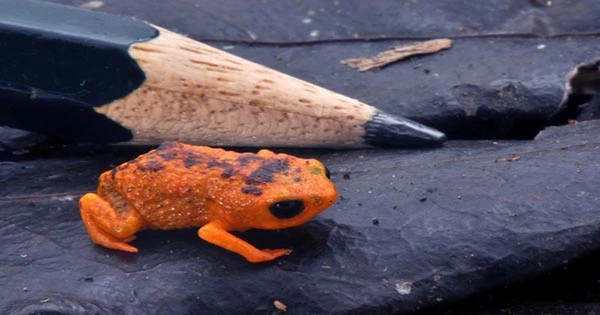8,000 old toad and frog bones discovered in a ditch during an excavation along the route of a new road in Cambridge, UK, have scientists confused. Between 2016 and 2018, the bones were discovered in a 14-meter-long [6-foot] ditch during excavations. They were discovered in the Middle and Late Iron Ages near an Iron Age roundhouse. The scientists had to dig through a meter of topsoil and subsoil to reach the amphibian graveyard, but the depth of the ditch is unknown.
The sheer volume of the bones in one location is a rare and amazing find, and one that has experts scratching their heads as to how they got there. “In my experience, working mostly on London-based sites, we don’t get that many frogs.” “To have that many bones come from one ditch is amazing,” Vicki Ewens, principal archaeozoologist at the Museum of London Archaeology (MOLA), told the Observer.
These bones appear to be largely from the common frog and common toad species, which may be found all throughout the United States. “We’ve also received probable pool frog evidence, which is intriguing… “It’s not something we generally discover in archaeology,” Ewens explains. “In my investigation, I’ve only discovered two Saxon sites, each with a single bone.” They’re an East Anglian frog that went extinct in the 1990s, presumably owing to habitat degradation, but has lately been restored.”
People have been eating amphibians since the Stone Age, according to archaeological evidence. However, there are no cuts or burn marks on the bones found in the ditch, which typical signs that these bones had been are chewed on, indicating that these animals were not consumed by the inhabitants in the town. Although there may be no indications of this if the frogs were cooked.
There found signs of burnt grain at a neighboring site, indicating that the occupants were processing harvests. The frogs may have been lured to the location because of the food because of the farming process, which may have attracted other pests that are part of the amphibian’s diet. Frisky frogs might have travelled into the region in search of mating places in the spring, and sadly fallen into the ditch and gotten stuck, according to one explanation.
Alternatively, the high fatality rate might have resulted from the harsh winter conditions. The intense cold may have killed them if it had been a particularly harsh winter. Another explanation might be due to illness. Frogs are susceptible to a variety of illnesses. In reality, a ranavirus wiped out the froggy population in the United Kingdom in the 1980s. The Frog Mortality Project was established to track and report on the illness. Ranaviruses are viruses that infect many frogs, as well as certain fish and reptiles.
“This is a perplexing and unexpected discovery that we are still attempting to make sense of.” A variety of distinct events, presumably interacting over time, may have contributed to the buildup of frog remains. We’re just not sure what these were yet!” Ewen remarked. Human and other animal remains, as well as various artifacts, were discovered at the site beside the bones. The materials are currently being analyzed, and it is hoped that this information may throw light on the time period. There is also optimism that the enigma of amphibian death may be answered one day.
















